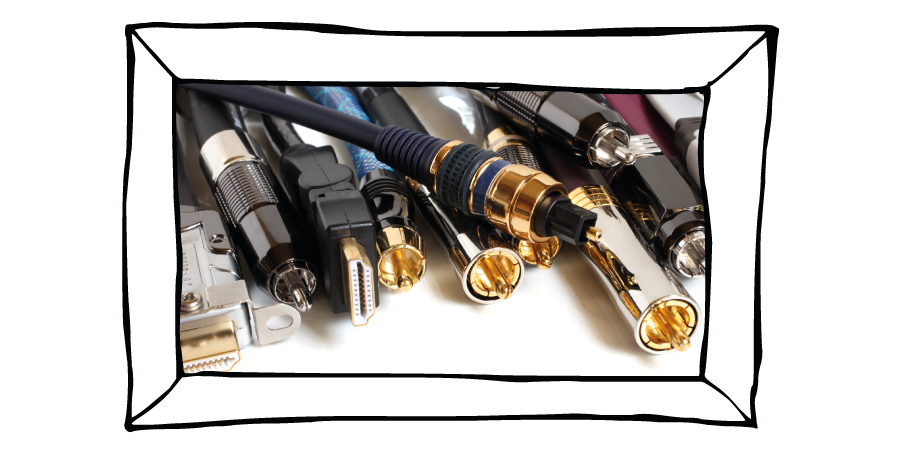How to decide which AV cable is right for you

First, some common characteristics. An AV cable is designed to convey both audio and visual signals from one device to another, decoding and transmitting the signal from the source device to the audio and video output.
Such is the range and array of past and modern technologies, that AV cables are available in a range of types and configurations to suit the demands of older signal sources, as well as 4K and 8K hardware. Let’s look at the five main different types of AV cable.
Composite AV cables
Sometimes also called RCA (for Royal Corporation of America) or F-pin cables, these are among the oldest designs of AV cable. They were launched in 1940 and are still used for connecting gaming consoles and DVD players, but they’re not suitable for high-definition (HD) signals as they were born in the pre-digital analogue era. Less widely used today than previously, they’re still handy for those with old VCR and DVD players.
S-Video AV cables
S-Video technology effectively separates video signals into two different channels — one for colour (chrominance) and one for brilliance (luminance). S-Video cables deliver crisper images to TV and video display screens than the older composite cables, and they’re often used to connect digital cameras and game consoles. The signal source and the TV/display must be compatible with S-Video outputs and inputs, but these cables can carry signals for more than 200 feet with minimal signal loss.
Coaxial AV cables
Also known as RF cables, coaxial cables, which can transmit both audio and video signals between devices, have been widely used to connect cable or digital set-top boxes to TVs. TV sets featuring RF inputs may only require an additional RF modulator or video switcher.
VGA/DVI AV cables
VGA (Video Graphics Array) and DVI (Digital Visual Interface) cables were designed to convert older analogue signals into digital ones in order to bridge together analogue and digital devices. The cables feature a single plug and connector that support both legacy analogue (VGA) and digital (DVI) devices, so that analogue signals can be transmitted to higher-end HDTVs and plasma displays, for example.
While DVI is a genuine digital video connection, VGA is analogue, so you’re not going to get the most spectacular results. Even so, they’re useful connectors for anyone wishing to view older analogue tech on newer digital devices.
HDMI AV cables
The HDMI (High-Definition Multimedia Interface) cable is one of the newer additions to the family of AV cables. Each HDMI cable combines digital video (DVI) with multi-channel audio signals. HDMI is the first technology capable of supporting the main visual definition formats for video (720p, 1080p and standard). It can also support multi-sound audio and is capable of traversing a maximum of 40 feet with no signal loss. These hi-definition cables allow you to enjoy sharp, clear visual images and are a marked improvement on older analogue and digital designs.

